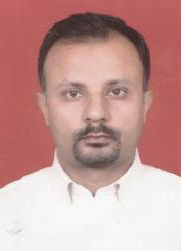No other state has exerted as much influence on the country’s polity as Uttar Pradesh. Getting a stamp of approval from the state is important for anyone to rule the country. The state has given nine out of the 15 prime ministers. So, those who get to rule Uttar Pradesh must have special skills to survive.
Journalist Shyamlal Yadav’s book ‘At The Heart of Power - The Chief Ministers of Uttar Pradesh’ encapsulates the journey of Uttar Pradesh’s 21 chief ministers.
From the first CM, Govind Ballabh Pant to the longest serving, Yogi Adityanath, and everyone in between including Mayawati, with a maximum of four tenures and also the first one to last a full term, two CMs who went on to become Prime Ministers - Chaudhary Charan Singh and V.P. Singh - and some like Mulayam Singh who missed the PM’s post by a whisker, the book tells the fascinating story of all.
In the process, the tumultuous journey of the state has been captured, in the book, through the governance styles and key decisions, some hits and many missteps, of these main protagonists. In fact, the key events of the state shaped the nature of national politics. To make sense of national politics, it is necessary to understand the state.
Since the last Congress government led by Narayan Dutt Tewari in 1989, the politics and power have oscillated between Samajwadi Party, Bahujan Party and the BJP. Mayawati, the second women Chief Minister of the state after Sucheta Kripalani - the first ever women CM in the country - was the first CM to complete a full tenure in the state since she was elected in 2007. After her, Akhilesh Yadav completed his full tenure and Yogi has become the first CM to hold the post for two consecutive posts.
The OBC-driven caste politics of the state defined by the likes of Kalyan Singh, Mulayam Singh and Akhilesh Yadav, which showed its impact during the last Lok Sabha polls as the issue of social justice promised through a caste census resonated in the polls.
The Dalit resurgence and consolidation under Mayawati has made them a potent vote bank that the parties cannot ignore.
The emergence of Hindutva sentiment started with the Ram Janambhoomi movement, which started with the appearance of Ram Lala’s idols in Babri Masjid during the tenure of first CM, Govind Ballabh Pant to firing on karsevaks during Mulayam’s tenure to the demolition of the mosque during Kalyan Singh’s tenure culmination with the building of grand Ram Temple in Ayodhya under Yogi government. Yogi’s free rein, police-criminal encounters and use of bulldozers have found resonance in many other states, especially ruled by the BJP.
Uttar Pradesh overshadows other states through its politics, which thus is reflected through the books written on the state and its leaders. This book stands out as it captures the entire political landscape of the state through all its chief ministers.
The amount of research which Yadav has done to present the story of UP’s CMs shines through the pages of the book. Peppered with anecdotes and some key slogans of the time captures the spirit of Uttar Pradesh and its politics. The book is a must-read for those who want to understand the political history of the state in a concise and chronological manner. It is a valuable addition to political literature on Uttar Pradesh and would be useful for students of politics, researchers, and social scientists.


